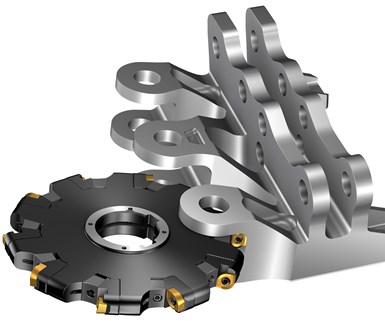Sandvik Coromant Introduces New Insert Geometries for Grooving
Sandvik Coromant has added the -M30 and -L50 insert geometry options for its CoroMill 331 milling cutter.
Share







Hwacheon Machinery America, Inc.
Featured Content
View More


Sandvik Coromant has added the -M30 and -L50 insert geometry options for its CoroMill 331 milling cutter. These periphery-ground additions are meant for light cutting in automotive and aerospace applications.
The -M30 geometry is designed for groove milling of steel and cast iron automotive parts. Available for size-11 inserts with radius dimensions ranging from 1.5 to 3.0 mm (0.059" to 0.118"), the insert geometry is characterized by its light cutting action, the company says. This geometry is said to be particularly beneficial for increasing security in weak setups or long-overhang applications. Grades available include GC1130, GC1020, GC3040 and GC4330.
The -L50 geometry is intended for machining of parts typical to aerospace and oil-and-gas applications. Offered for size-11 inserts with radius dimensions ranging from 3.0 to 6.3 mm (0.118" to 0.248"), light cutting action is said also to be the principal attribute of this geometry, making it suitable for materials such as stainless steel, nickel-based superalloys and titanium. Optimized for use in good operating conditions and heavy application areas, the available grade options include GC1040, GC2040 and S30T.
“Groove milling is one of the most common application areas within indexable milling, and the new geometries are specifically designed to meet the demands of machine shops looking to improve process security, quality and cost,” says Jenny Häll Jansson, the company’s global product manager for milling.
Related Content
-
Custom PCD Tools Extend Shop’s Tool Life Upward of Ten Times
Adopting PCD tooling has extended FT Precision’s tool life from days to months — and the test drill is still going strong.
-
Briquetting Manufacturer Tools Up for Faster Turnaround Times
To cut out laborious manual processes like hand-grinding, this briquette manufacturer revamped its machining and cutting tool arsenal for faster production.
-
Toolpath Improves Chip Management for Swiss-Type Lathes
This simple change to a Swiss-type turning machine’s toolpath can dramatically improve its ability to manage chips.

































.png;maxWidth=300;quality=90)



